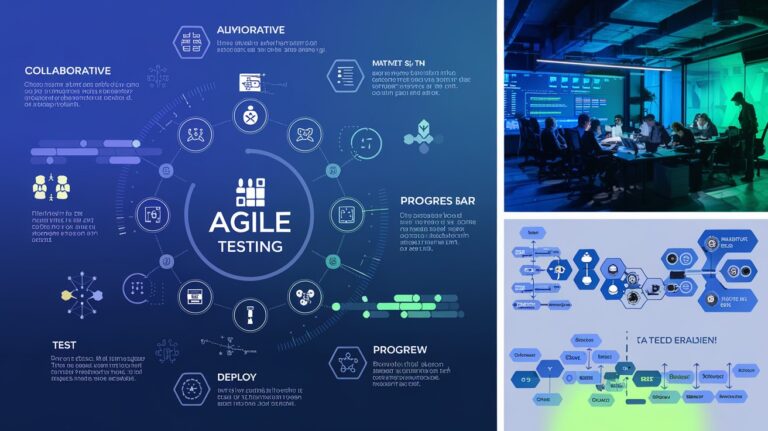Introduction

In today’s rapidly evolving software development landscape, Agile testing has become the cornerstone of successful project delivery. Recent studies show that organizations implementing effective Agile testing practices experience a remarkable 80% increase in development speed and a 60% reduction in post-release defects. This comprehensive guide explores the essential principles, proven strategies, and cutting-edge tools that make Agile testing a powerful force in modern software development.
Understanding Agile Testing Fundamentals

The foundation of Agile testing lies in its seamless integration with development processes. Unlike traditional testing methods that operate in isolation, Agile testing embraces collaboration and continuous feedback. According to the State of Agile Report, 94% of organizations practicing Agile methodologies report improved project transparency and team alignment.
Testing in an Agile environment requires a fundamental shift in mindset. Rather than viewing testing as a phase that follows development, it becomes an integral part of the entire software development lifecycle. This integration ensures early defect detection and promotes a quality-first approach that significantly reduces the cost of bug fixes.
Core Principles That Drive Success

The success of Agile testing hinges on several key principles that guide teams toward excellence. Continuous testing stands as the primary pillar, enabling teams to identify and address issues as they arise. This approach has shown to reduce testing cycles by 40% while improving overall product quality.
Another crucial principle is the emphasis on automation. Teams that successfully implement test automation report handling 50% more test cases with the same resources. This efficiency gain allows testers to focus on more complex scenarios and exploratory testing, adding greater value to the development process.
Implementing Effective Agile Testing Strategies

Successful Agile testing implementation requires a well-thought-out strategy that aligns with business objectives. Start by establishing a clear testing pyramid that balances unit, integration, and end-to-end tests. Research indicates that organizations following this approach achieve 70% faster release cycles.
Communication plays a vital role in Agile testing success. Daily stand-ups and regular retrospectives ensure that testing activities remain synchronized with development efforts. Teams should also embrace the concept of “whole-team responsibility” for quality, where everyone contributes to the testing effort.
Essential Tools for Modern Agile Testing

The right tools can significantly enhance Agile testing effectiveness. Popular automation frameworks like Selenium and Cypress have shown to reduce testing time by up to 60%. Additionally, continuous integration tools such as Jenkins and CircleCI enable seamless test execution within the development pipeline.
Test management tools have evolved to support Agile methodologies better. Solutions like Zephyr and TestRail help teams track test coverage, manage test cases, and generate comprehensive reports. These tools have demonstrated a 45% improvement in test management efficiency.
Overcoming Common Challenges

While Agile testing offers numerous benefits, teams often face challenges during implementation. One common hurdle is resistance to change from team members accustomed to traditional testing methods. Successful organizations overcome this through comprehensive training programs and gradual transition plans.
Resource allocation presents another significant challenge. Organizations can address this by implementing efficient test automation strategies and utilizing cloud-based testing environments. This approach has helped companies reduce testing infrastructure costs by 35%.
Future Trends in Agile Testing

The landscape of Agile testing continues to evolve with emerging technologies. Artificial Intelligence and Machine Learning are revolutionizing test automation, with early adopters reporting a 40% reduction in test maintenance effort. Additionally, the rise of DevOps practices is further streamlining the testing process through increased automation and improved collaboration.
Conclusion
Agile testing represents a fundamental shift in how organizations approach software quality assurance. By embracing its principles, implementing effective strategies, and utilizing modern tools, teams can significantly improve their development efficiency and product quality. The key to success lies in continuous adaptation and improvement of testing practices to meet evolving business needs.














